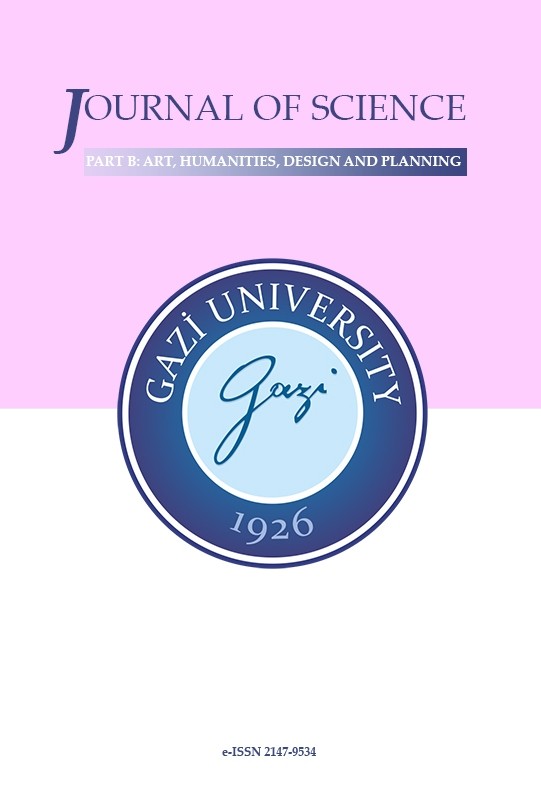Evaluation of Mixed-Use Residential Buildings within the Context of Ecological Criteria
Evaluation of Mixed-Use Residential Buildings within the Context of Ecological Criteria
Mistakes in the way energy is produced and used cause global energy problems and adverse effects on the natural environment. Researches show that a significant part of the energy consumed is used by the construction sector. Designing residential buildings in the context of green criteria is important in terms of decreasing global energy demand. The residences designed in recent years have become more compact with the construction of subsystems that can meet many daily needs. These mixed-use residential buildings lead to collective energy consumption and when they designed in the context of green criteria, they provide savings in great measure. In this study, it is aimed to create a guide in which mixed-use houses can form their own ecosystem in line with green criteria. In this study, for evaluating mixed-use residential designs, one of the existing certification systems, the world-wide, LEED standards created by the USGBC and BEST housing certification guide created by ÇEDBIK Association in Turkey were examined as a criterion. Received at least a gold grade according to LEED certification were evaluated. Results indicated that mixed–use residential buildings designed together with energy-saving strategies and green design criteria examined in the literature review can produce positive results in terms of energy efficiency.
Keywords:
Mixed-use Residential Buildings, Ecological Criteria, Energy Efficiency LEED, Residential Certification Guide,
___
- Article 25.1, https://www.unfpa.org/human-rights-based-approach, Last Access Date: 22 December (2019).
- Aoul, K. A. T., Ahmed, K. G., Bleibleh., S., “Mass housing: challenges, contemporary paradigms and future potentials”, Springer, New York, 31–64, (2016).
- UNFP, United Nations Population Fund, https://www.unfpa.org/, Last Access Date: 22 December (2019).
- Zuo, J., Zhao, Z. Y., “Green building research–current status and future agenda: A review”, Renewable and Sustainable Energy Reviews, 30: 271-281, (2014).
- Suzer, O., “A comparative review of environmental concern prioritization: LEED vs other major certification systems”, Journal of Environmental Management, 154: 266-283, (2015).
- Illankoon, I. C. S., Tam, V. W., Le, K. N., Shen, L., “Key credit criteria among international green building rating tools”, Journal of Cleaner Production, 164: 209-220, (2017).
- IEA. (2017), https://www.energypoverty.eu/indicators-data, Last Access Date: 22 December (2019).
- Erdede, S. B., Bektaş, S., “Ecologically sustainable development of real estate and certificate systems of green building”, Electronic Journal of Map Technologies, 1: 1-12, (2014).
- Zhang, C., Cui, C., Zhang, Y., Yuan, J., Luo, Y., Gang, W., “A review of renewable energy assessment methods in green building and green neighborhood rating systems”, Energy and Buildings, 195: 68-81, (2019).
- https://www.greencommunities.com/, Last Access Date: 20 December (2019).
- Süzer, Ö, “Sustainable design criteria of mixed-use residential high-rise buildings”, Master Thesis, Hacettepe University Institute Of Social Science, Ankara, (2012).
- Gümüş, Y, “An evaluation of mass housing for the implementation of heating and cooling energy efficiency case study in Istanbul”, Master Thesis, Istanbul Technical University, Institute of Science and Technology, Istanbul, (2011).
- Zhou, Y., Li, Z., Tao, X., “Urban mixed use and its impact on energy performance of micro gird System”, Energy Procedia, 103: 339-344, (2016).
- Wilkinson, S.,Hajibandeh, M., Remoy, H., “Sustainable Development”, M. Noguchi (Ed.), Springer, New York, 1-29, (2016).
- Doan, D. T., Ghaffarianhoseini, A., Naismith, N., Zhang, T., Ghaffarianhoseini, A., and Tookey, J., “A critical comparison of green building rating systems”, Building and Environment, 123:243-260, (2017).
- Mattoni, B., Guattari, C., Evangelisti, L., Bisegna, F., Gori, P., and Asdrubali, F., “Critical review and methodological approach to evaluate the differences among international green building rating tools”, Renewable and Sustainable Energy Reviews, 82: 950-960, (2018).
- USGB (United States Green Building), https://www.usgbc.org/, Last Access Date: 11 November (2019).
- Ecobuild, https://www.ecobuild.com.tr/, Last Access Date: 11 November (2019).
- ÇEDBİK, Turkish Green Building Council, https://cedbik.org/en , Last Access Date: 21 November (2019).
- AND Pastel, https://www.andpastel.com/default.aspx, Last Access Date: 02 November (2019).
- EKOYAPI, https://www.ekoyapidergisi.org/, Last Access Date: 03 November (2019).
- Mistral İzmir, https://www.mistralizmir.com.tr, Last Access Date: 03 November (2019).
- Emre Arolat Architecture, https://www.emrearolat.com/, Last Access Date: 03 November (2019).
- Kuzu Effect, https://www.kuzueffect.com/, Last Access Date: 03 November (2019).
- PiyalePaşa İstanbul, https://www.piyalepasaliolmak.com/piyalepasa-istanbul-cevre-dostu-bir-proje/, Last Access Date: 04 November (2019).
- Scott. J., “Working-Class Housing Complex Will Rise as Part of the Greenery”, The New York Times, (2007).
- https://igsmag.com/features/case-study-bridge-philadelphia-pa-2/, Last Access Date: 25 November (2019).
- https://archpaper.com/2014/08/refined-peter-gluck-designed-tower-to-break-ground-in-philly-early-next-year/, Last Access Date: 24 November (2019).
- Macallen Building Condominiums, https://www.aiatopten.org/node/130, Last Access Date: 26 November (2019).
- KAPSARC Housing, https://www.archdaily.com/614598/kapsarc-housing-hok, Last Access Date: 26 November (2019).
- KAPSARC Housing, https://www10.aeccafe.com/blogs/arch-showcase/2017/05/28/king-abdullah-petroleum-studies-and-research-center-residential-community-in-riyadh-saudi-arabia-by-hok/Last, Access Date: 27 November (2019).
- Yayın Aralığı: Yılda 4 Sayı
- Başlangıç: 2013
- Yayıncı: Gazi Üniversitesi
